
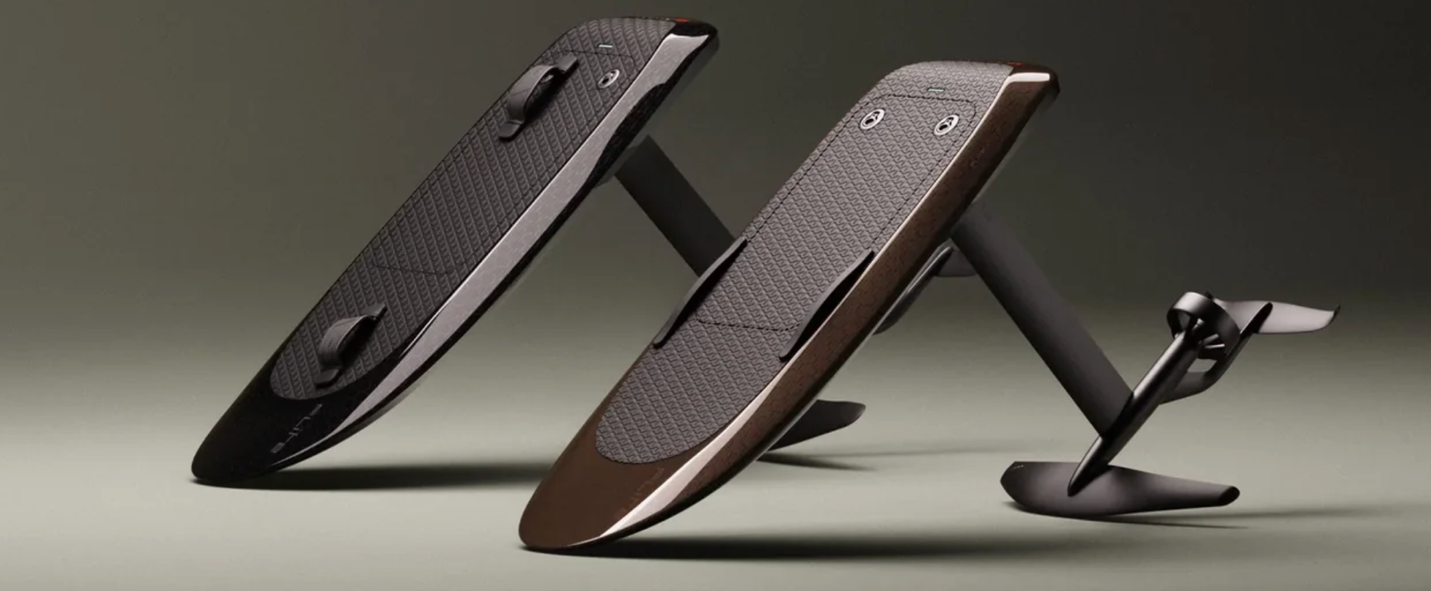
Selecting the correct mast configuration for your Fliteboard eFoil can make a world of difference in your riding experience. Something as small as a few centimeters on the mast or in the wing size can significantly impact the ride’s feel, fun, or difficulty.
Whether you’re a beginner or an advanced rider, making the right choices in masts, propulsion systems, and wing setups can make or break your efoiling sessions and success as a rider in the long run. To compare complete setups, check out our full range of efoils for sale options tailored to each riding level.
From great beginner options to even better-advanced options and some high-level intermediate options, there’s a world of potential for growth and improvement. If you’re committed to the challenge of learning to use gear just a step above your current level, the fun will last for years to come. We’ll also cover the easiest ride options for those of you who want a smooth start.
In this guide, we’ve left no stone unturned to help you choose the perfect combination for your needs. You can be confident that you’re making an informed decision.
When configuring your Fliteboard eFoil, it’s essential to consider how different components work together. Here are a few pairing options based on rider skill level and intended use:
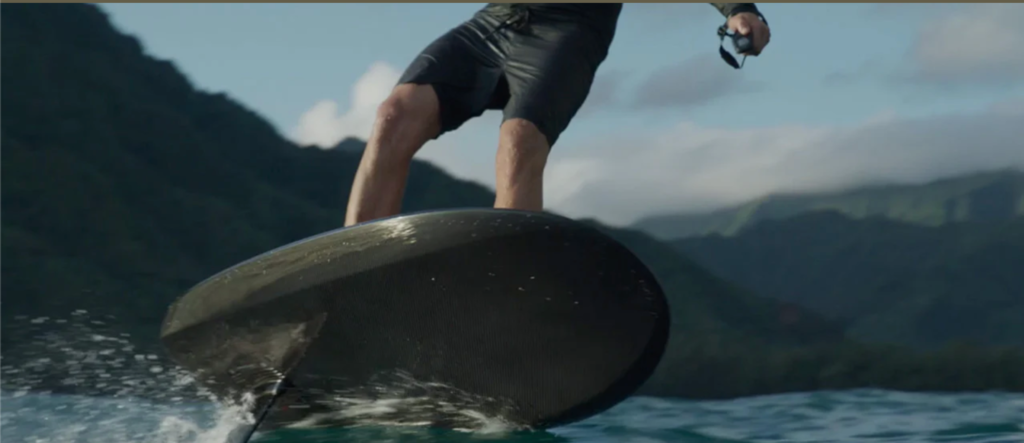
The mast length and material significantly affect your riding experience. Flite has a few eFoil units to choose from, each with a number of lengths, materials, and benefits to consider. Their units are unibody, so you’re not just getting a mast—you’re getting an entire system that will be compatible with specific products in their range.
Here’s a breakdown of the options regarding mast length considerations.
Shorter Masts (60 cm): Ideal for beginners, short masts are easier to control and more forgiving, making them perfect for learning.
They provide more stability and reduce the likelihood of falling from a height. This mast is used with the Flitescooter, but we don’t start with most students here. Unless you want the easy cruiser benefits of an eFoil scooter, most riders will outgrow this length in a matter of hours to days.
Longer Masts (75 cm): An excellent all-around option, medium masts offer a balance of stability and performance. They allow for greater maneuverability and are suitable for riders who have mastered the basics and are ready to take on more challenging conditions. This unibody construction pairs well with Fliteboard AIR, AIR PRO, Fliteboard, and Fliteboard PRO.
Long Masts (80 cm +): Designed for advanced riders, long masts offer the most height above the water, allowing for better clearance in choppy conditions and more aggressive turns. They’re perfect for those looking to push their limits in open water or wave riding.
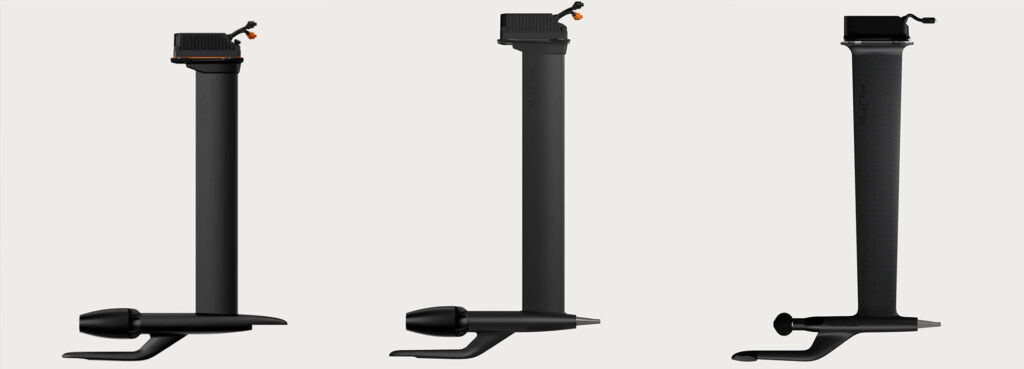
There are three constructions to choose from.
The standard eFoil unit comes in Anodized aluminum and offers several benefits.
Corrosion Resistance & Durability: The anodizing process creates a thick oxide layer on the mast’s surface, significantly increasing corrosion resistance. An anodized aluminum mast will last longer and maintain its structural integrity, even after prolonged exposure to harsh environments and saltwater.
Increased Hardness & Wear Resistance: This unit’s surface hardness is much greater than that of untreated aluminum, which helps protect it from scratches, dings, and wear caused by sand, rocks, and other debris.
Lightweight Efficiency: Aluminum is lightweight, and the anodizing process doesn’t add significant weight. A lighter mast contributes to the overall responsiveness of the eFoil, allowing for quick turns and easy handling.
Good Value for Performance: While not as light or stiff as carbon fiber, anodized aluminum offers an excellent balance of performance, durability, and cost, making it a popular choice for many eFoil masts. These benefits make it the gold standard in eFoil mast construction.
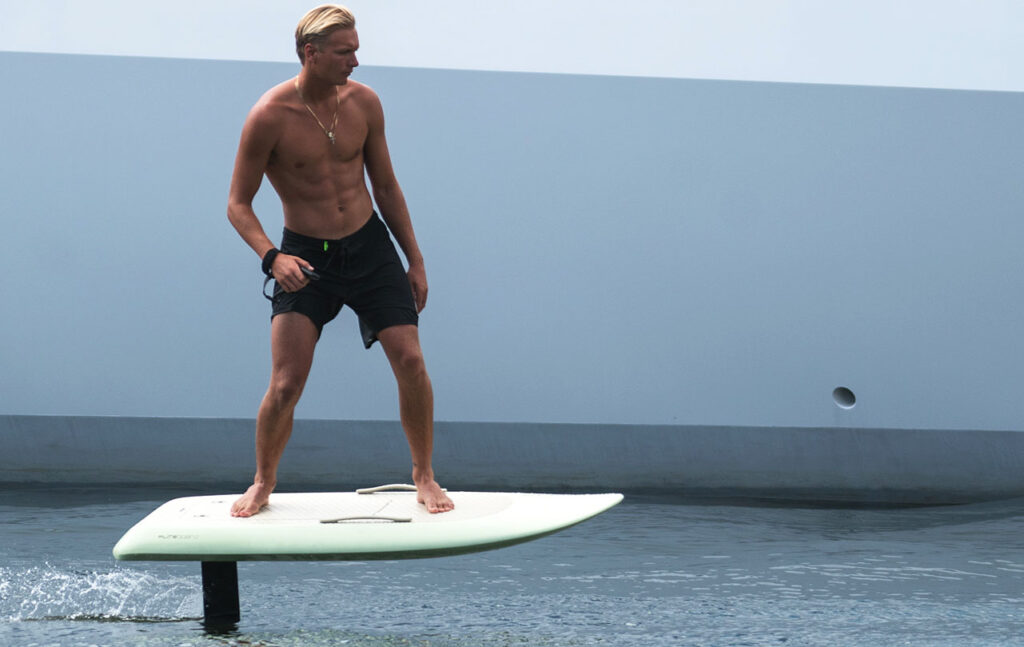
Fliteboard Performance eFoil System/Mast 80 cm
The performance masts are designed to pair the next generation of conical wings from Fliteboard. These masts use Aero-grade aluminum, often used in high-performance applications; it has many benefits, making it an attractive material for those seeking a balance between strength, weight, and durability. Here are the advantages:
High Stiffness, Stability, & Control: Aero-grade aluminum has a high modulus of elasticity, meaning it resists bending under stress. This stiffness translates to better response and control. The mast will flex less under load, providing a precise and responsive ride with minimal rider input.
Exceptional Strength-to-Weight Ratio: Expect significant structural strength without adding excessive weight, which is crucial for maintaining an eFoil’s agility and responsiveness. The lightweight nature of this material means it’s easier to transport, and there is less worry about damaging it.
Corrosion Resistance & Durability: Aero-grade aluminum is highly corrosion-resistant, especially when treated or anodized. This makes it ideal for use in saltwater. Expect long-term performance and reliability regardless of where you eFoil. Aero-grade aluminum is designed to withstand repeated stress without degrading. This property is essential in eFoiling, where the mast undergoes constant dynamic loads while taking fast, sharp turns or shredding waves.
Precision Manufacturing: Aerospace-grade aluminum can be machined with high precision, ensuring the mast fits perfectly with other eFoil components. The unibody design means less drag when in use and less wear over time. This upgraded material, paired with the next generation of conical wings from Fliteboard, is our recommendation for the forward-thinking eFoiler. If you’re not on a budget, it’s well worth the investment for the years of performance and fun.
Should I get the Mark Newsome Mn Carbon masts?
The Carbon Mn 82 and Mn Carbon Wave masts are built with Japanese high-modulus pre-preg carbon fiber and offer a range of significant benefits that no other material can match.
Unmatched Strength-to-Weight Ratio: The carbon mast is robust and ultra-lightweight. The reduced weight and higher precision profile mean less drag in the water, leading to better efficiency. eFoils tend to have more drag than regular foils with all the extra components. This thinner profile means it will feel more like a prone foil.
Superior Stiffness Comfort & Control: The MN Carbon 82 is stiffer than other materials like aluminum or lower-grade carbon fibers. The mast will flex very little under load, providing a more precise and responsive ride with better control, especially at high speeds. High-level wave riders, racers, and freestyle foilers need this added stiffness to perform.
The mast’s rigidity means it maintains its shape and alignment no matter how hard or sharp you carve a powerful wave. This Carbon has incredible vibration-damping properties, which help reduce the transmission of vibrations from the water to the rider, resulting in a smoother, more comfortable ride, even in choppy conditions.
Durability & longevity: The mast will maintain its structural integrity for a long time and can withstand repeated stress without degrading, even with frequent and intense use. It is naturally corrosion-resistant, and it’s the best choice for use in saltwater.
Streamlined Design: High-modulus carbon fiber allows for the creation of thinner, more streamlined masts that reduce drag in the water and the air. This improves the eFoil’s overall efficiency, leading to better performance and speed. These units are designed to feel more like prone foils than eFoils.
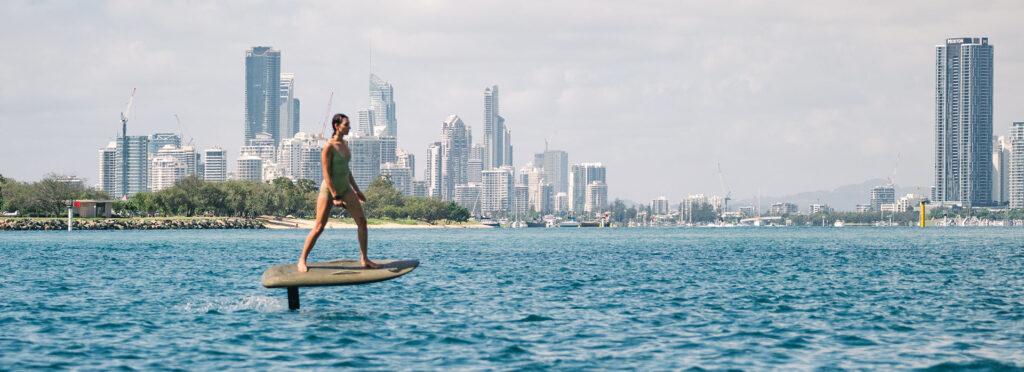
The propulsion system you choose will determine the power and responsiveness of your eFoil. Fliteboard offers three options to cater to different riding preferences.
The wings you choose will dramatically affect how your eFoil handles. Fliteboard offers a variety of wings designed to cater to different riding styles and conditions.
When selecting a wing set, consider the size and design. Fliteboard has several different designs. Here is a quick quote to summarize the range.
When configuring your Fliteboard eFoil, consider your skill level, the conditions you’ll be riding in, and your performance goals. Whether you’re just starting or looking to upgrade your setup, the Fliteboard lineup has a perfect configuration waiting for you. Need help choosing? Our Panama City Beach eFoil lessons are a great way to test different gear with expert guidance.
If you have any questions about eFoils or need help deciding which is best for you, call (850) 400-8500 or email us at [email protected] for a custom recommendation. We offer eFoil lessons, guided eFoil tours, eFoil demos, storage and delivery options for your eFoils, and more.
Please fill out this form and someone from our team will contact you as soon as possible. You can also reach us by email at [email protected]